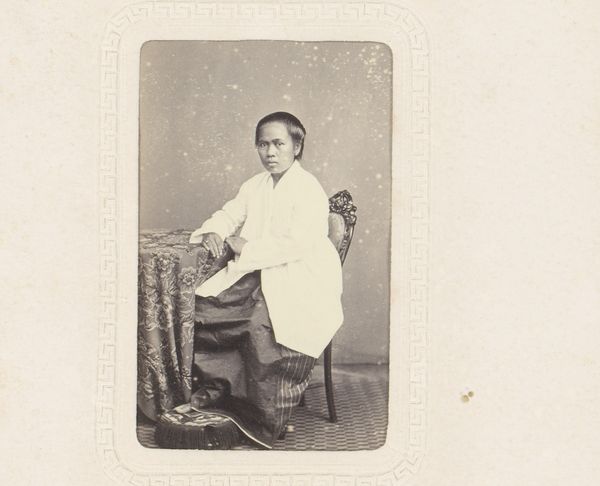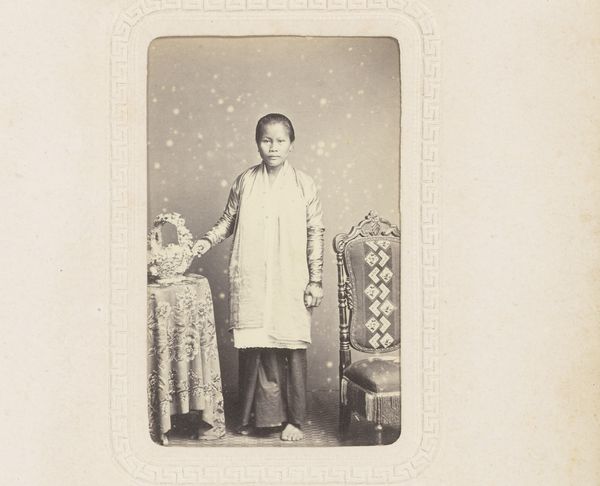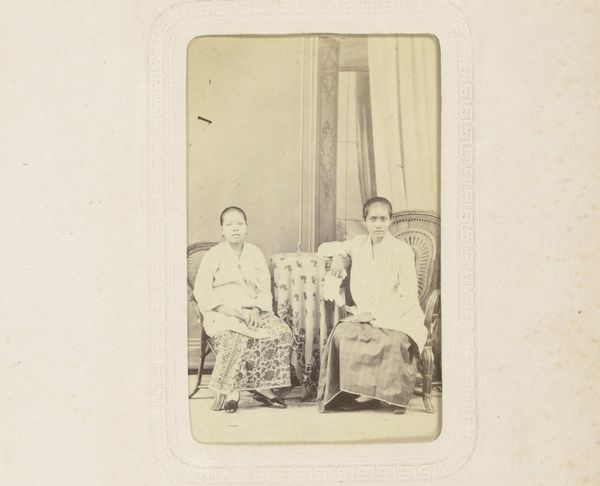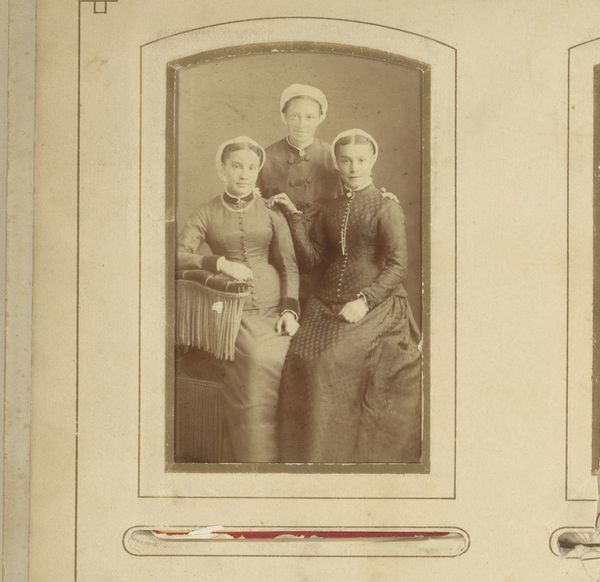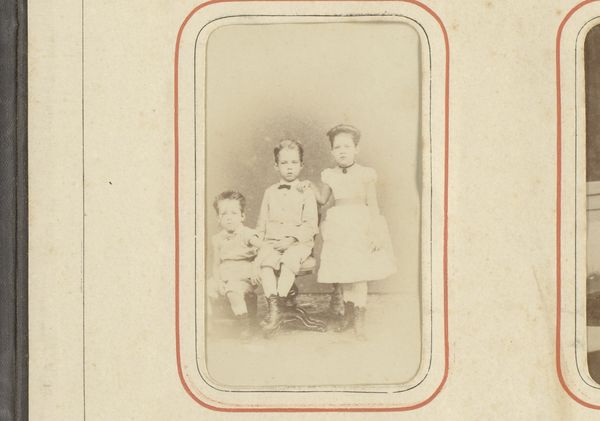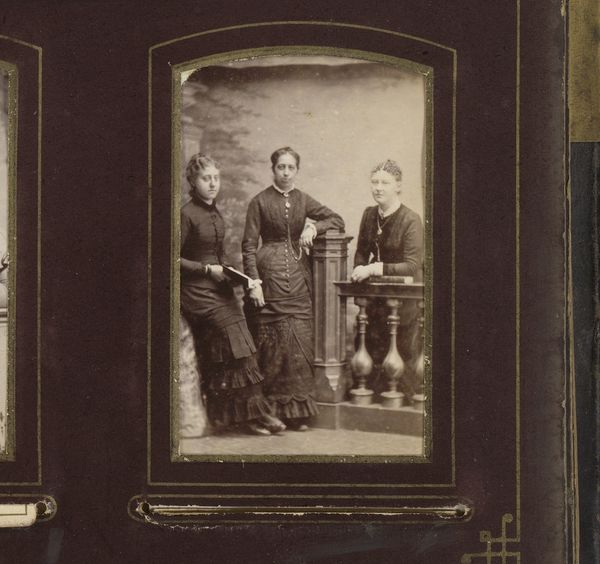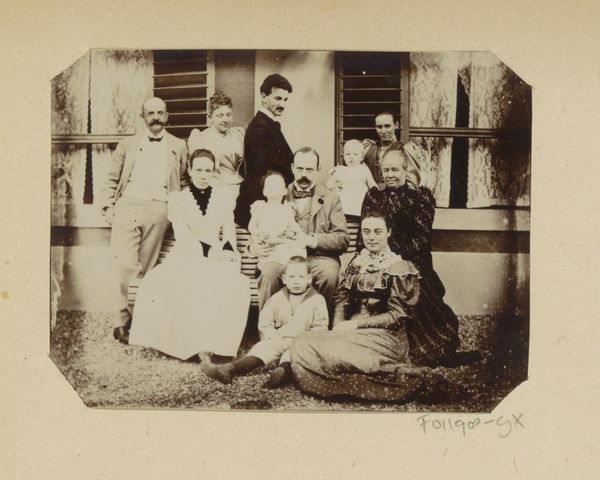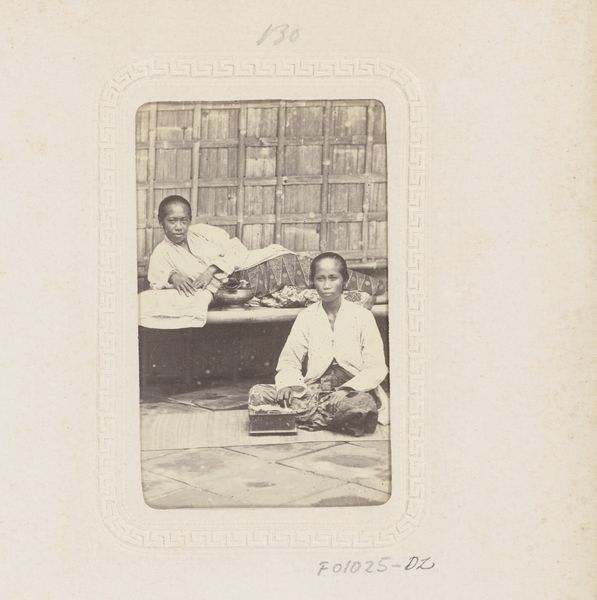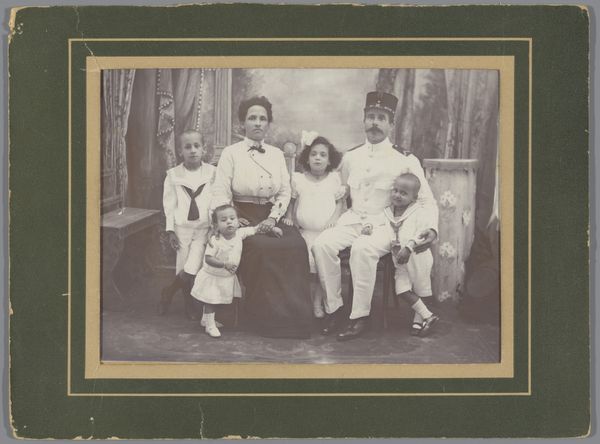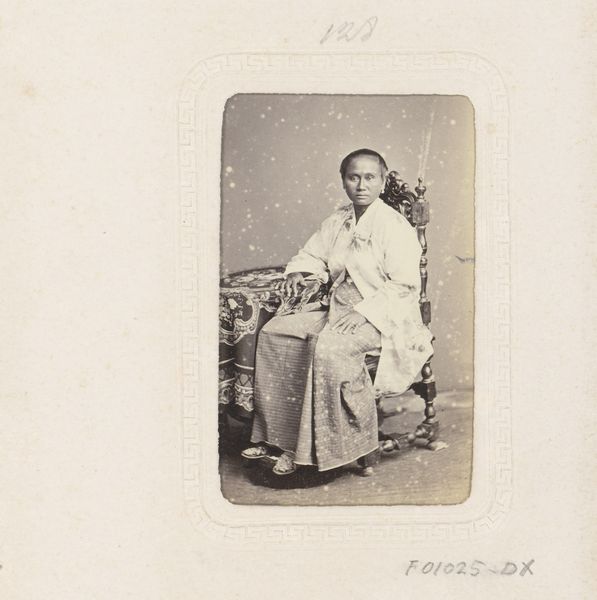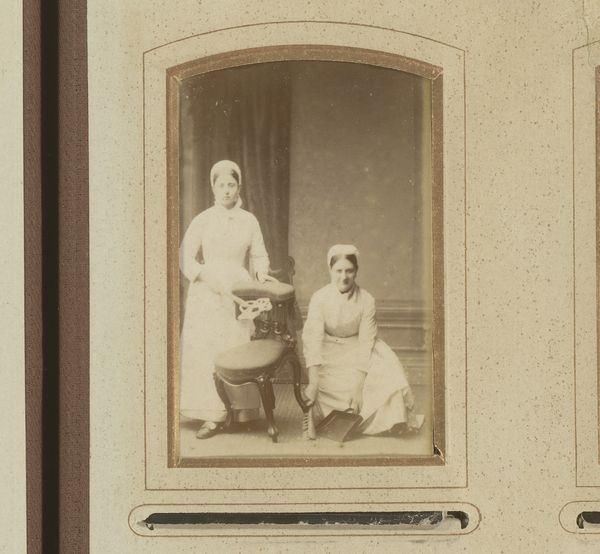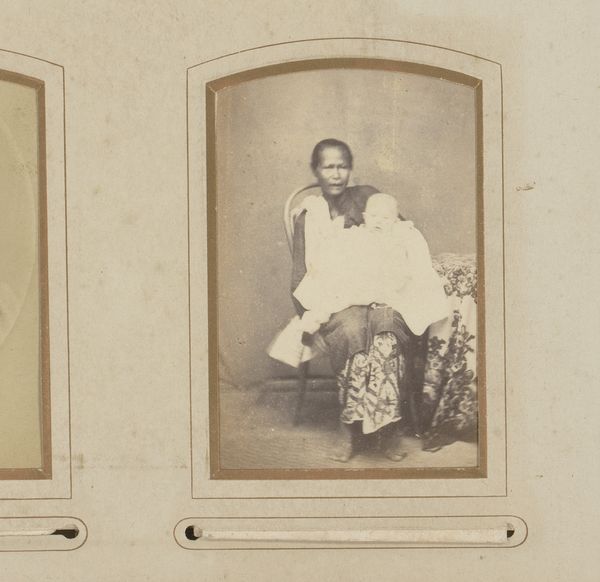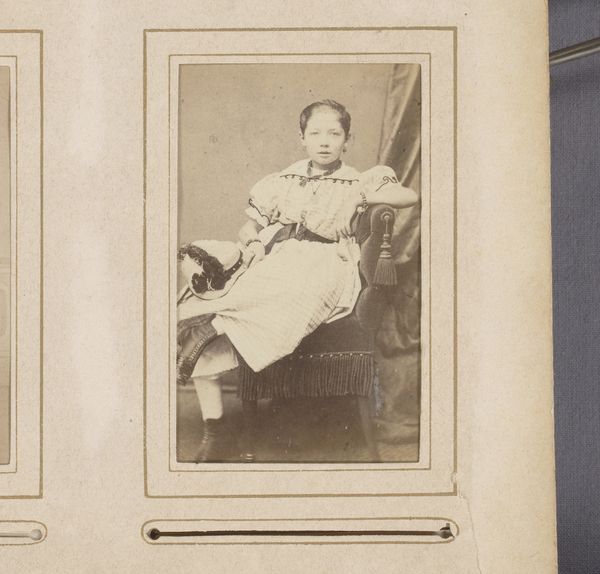
photography
#
portrait
#
african-art
#
archive photography
#
photography
#
historical photography
#
group-portraits
#
19th century
Dimensions: height 85 mm, height 52 mm
Copyright: Rijks Museum: Open Domain
Editor: This is a photograph titled "Groepsportret van vijf jonge Indonesische vrouwen," or "Group Portrait of Five Young Indonesian Women," taken sometime between 1857 and 1880 by Woodbury & Page. The photo has a subdued tone, and the women all appear very serious. What stands out to you in this piece? Curator: It’s fascinating how portraiture, especially in this period, functions as a repository of cultural memory. The photograph presents us with potent symbols. Consider the gaze of these women. Direct, unsmiling, they challenge the viewer. What does that imply, do you think, about their social standing or perhaps the circumstances under which this photograph was taken? Editor: Perhaps a level of formality required by the photographic process at the time? Or maybe the photographer's instructions? Curator: Possibly. But think also about what they choose to reveal and conceal. Their clothing, while similar, subtly differs in pattern and adornment. Do these differences signify status, regional origin, or something else entirely? It speaks volumes about identity—a negotiation between individuality and belonging within a specific cultural context. Even the speckled background… do you perceive intentionality or accident there? Editor: I hadn't considered the background. It seems more like an artifact of the printing process. I was more drawn to how the light illuminates their faces, creating subtle differences in how we perceive them. Curator: Exactly! And light, in visual language, can symbolize enlightenment, revelation, or even divine favor. Consider the relationship between light and shadow in the history of portraiture. Where does it lead you? Editor: This photograph seems deceptively simple, but it’s rich with social and historical context to unpack. Curator: Indeed. It's a compelling study in how a single image can hold and transmit layers of cultural and psychological information across time. A testament to the power of visual symbols.
Comments
No comments
Be the first to comment and join the conversation on the ultimate creative platform.
